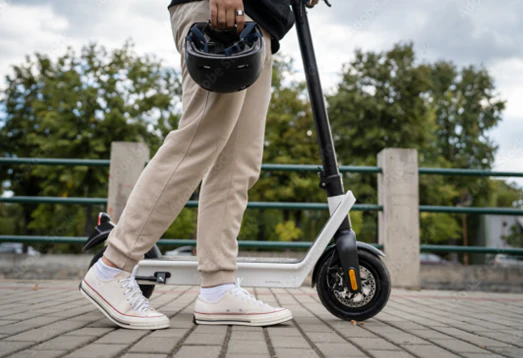In recent years, elektrische step legaal have surged in popularity, transforming urban mobility and changing how people navigate city streets. With their eco-friendly design, compact size, and user-friendly features, electric scooters have become a go-to choice for commuters and recreational riders alike. This article delves into the evolution, benefits, challenges, and future of electric scooters as a sustainable transportation option.
A Brief History
The concept of the electric scooter is not new. Early iterations date back to the late 19th century when inventors experimented with battery-powered vehicles. However, the modern electric scooter, as we know it today, emerged in the early 2000s. The rise of shared mobility services in urban areas, particularly after the launch of dockless scooter-sharing platforms in 2017, played a crucial role in popularizing this mode of transport. Cities across the globe saw an influx of electric scooters, providing a convenient and affordable alternative to traditional public transportation.
Benefits of Electric Scooters
- Environmental Impact: One of the most significant advantages of electric scooters is their reduced carbon footprint. Unlike traditional vehicles, electric scooters produce zero emissions, contributing to cleaner air and a decrease in urban pollution. As cities strive to meet sustainability goals, electric scooters offer a viable solution to reduce dependence on fossil fuels.
- Cost-Effective: Electric scooters are generally more affordable than owning and maintaining a car. Users can rent scooters for short trips at a fraction of the cost of public transport or ride-sharing services. Additionally, the low operational costs associated with charging and maintenance make them an economical choice for daily commuting.
- Ease of Use: With user-friendly designs, electric scooters are accessible to people of all ages. Many models feature intuitive controls, making it easy for beginners to ride. Furthermore, their lightweight and foldable designs allow users to carry them onto public transport or store them conveniently at home or the office.
- Reducing Traffic Congestion: Electric scooters can alleviate traffic congestion in crowded urban areas. By providing a quick alternative for short distances, they reduce the number of cars on the road, easing congestion during peak hours. This shift can lead to shorter commute times and improved overall traffic flow.
Challenges Faced by Electric Scooters
Despite their many benefits, electric scooters face several challenges that need addressing:
- Safety Concerns: Safety remains a significant issue as the number of electric scooters on the streets increases. Riders often face risks from reckless driving, poor road conditions, and inadequate helmet use. To mitigate these risks, cities must invest in infrastructure improvements and implement safety regulations.
- Regulation and Policy: The rapid growth of electric scooters has led to regulatory challenges. Many cities struggle to establish clear guidelines for their use, resulting in confusion for riders and pedestrians alike. Developing comprehensive policies that govern where and how scooters can operate is essential for ensuring public safety and maintaining order in urban environments.
- Vandalism and Maintenance: The prevalence of shared electric scooters has led to instances of vandalism and neglect. Proper maintenance and timely repairs are vital to ensure the safety and reliability of these vehicles. Companies must implement effective strategies for fleet management to address these issues.
The Future of Electric Scooters
As urban areas continue to evolve, electric scooters are poised to play a significant role in shaping the future of transportation. Several trends are emerging that indicate a bright future for this mode of transport:
- Integration with Public Transit: Future urban mobility solutions will likely focus on integrating electric scooters with existing public transportation networks. By allowing riders to easily transition between scooters and buses or trains, cities can create a more cohesive and efficient transportation system.
- Technological Advancements: Innovations in battery technology and smart connectivity will enhance the performance and safety of electric scooters. Features like GPS tracking, anti-theft systems, and improved battery life will make scooters more reliable and appealing to users.
- Sustainable Practices: As environmental concerns grow, manufacturers and operators will increasingly prioritize sustainability. This includes using eco-friendly materials for scooter production and implementing recycling programs for batteries and components.
- Expanded Accessibility: Efforts to make electric scooters accessible to all individuals, including those with disabilities, will likely gain traction. Designing scooters with features that accommodate diverse needs will foster inclusivity in urban mobility.
Conclusion
Electric scooters represent a promising solution to many of the challenges facing urban transportation today. With their potential to reduce environmental impact, ease traffic congestion, and provide a cost-effective means of travel, they are more than just a trend—they are a vital component of a sustainable urban mobility ecosystem. By addressing safety concerns and regulatory challenges, cities can fully embrace the benefits of electric scooters and pave the way for a cleaner, more efficient future.

